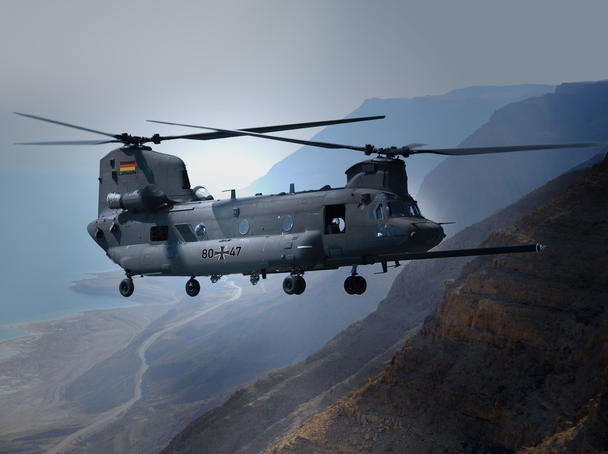- Joined
- 26 May 2006
- Messages
- 34,911
- Reaction score
- 15,788
SteveO said:Fascinating, but does this arrangement have advantages over a fuselage mounted set of wings?
Abraham Gubler said:SteveO said:Fascinating, but does this arrangement have advantages over a fuselage mounted set of wings?
Structurally yes. If you were to mount wings on the fuselage you would need to add a structure so the wings could support the weight of the helicopter when they generate lift. By adding the wings to the blade hub the structure is already there to support the weight. So when the helicopter starts to move forward the wings start to generate lift the pilot can unload the rotors yet the hub will keep on 'holding' up the aircraft.
yasotay said:Also no down force on the wings if they are mounted above the rotor system. A classic issue for winged helicopters. Although I have to wonder if there are any issues with the induced flow or any issues with tip vorticies from for forward wing on the aft rotor?
Abraham Gubler said:The rotors would be in the main just windmilling along during cruise flight.
yasotay said:Found this on a side wall at the Boeing pavillion at AHS. Note the German markings.
Yes, it seems that the HTH/FTH program (CH-53G successor for the Heeresflieger / German Army Air Corps) is going more forward to a tandem rotor heavy-lift helicopter.Note the German markings.
;D Yeah, it's been shaped by an ugly stick from the look of it. I was hoping for something that looked more like the Boeing 360 http://www.secretprojects.co.uk/forum/index.php/topic,4095.0.htmlSpudmanWP said:After seeing that and all you can say i the windows are weird?
It could be but I also think that the focus is to off load the rotor system at high speed flight.Avimimus said:Yes - hard to bill this as a mid-life upgrade...
Btw, I take it the ULORs are used to shift CG at low speed?
Interesting.
Re: Boeing Future Transport Rotorcraft for European requirement?
Yes, it seems that the HTH/FTH program (CH-53G successor for the Heeresflieger / German Army Air Corps) is going more forward to a tandem rotor heavy-lift helicopter.Note the German markings.
Even EADS/Eurocopter is promoting a tandem rotor helicopter.
See thread "Eurocopter HTH".

I disagree.Structurally yes. If you were to mount wings on the fuselage you would need to add a structure so the wings could support the weight of the helicopter when they generate lift. By adding the wings to the blade hub the structure is already there to support the weight. So when the helicopter starts to move forward the wings start to generate lift the pilot can unload the rotors yet the hub will keep on 'holding' up the aircraft.
I suspect Boeing was looking at this as an alternate means (vice tilt rotor), to get wing-borne flight to extend range while retaining the utility of conventional helicopters. It likely had at least two things against it: weight (= cost) and it looks weird (U.S. Army does not do weird).Still, I don't really understand the benefits of this design, but I think it looks cute
I'd argue that the lack of a rear ramp would have killed this even if the Army was willing to do "weird"I suspect Boeing was looking at this as an alternate means (vice tilt rotor), to get wing-borne flight to extend range while retaining the utility of conventional helicopters. It likely had at least two things against it: weight (= cost) and it looks weird (U.S. Army does not do weird).
I also just noticed that the aircraft does not have a rear ramp. It appears to have two large barn doors on the left side of the aircraft (likely on eon the other side as well. So loading vehicles would require extra equipment to put them in the cargo compartment.
I also just noticed that the aircraft does not have a rear ramp.

